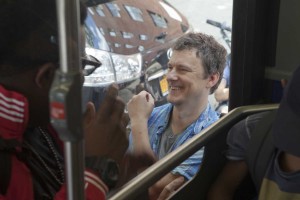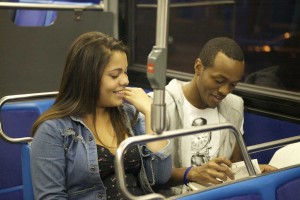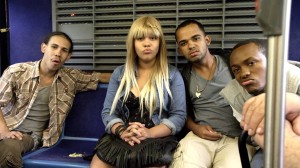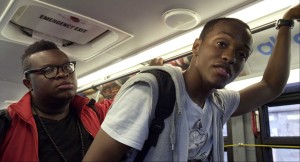
After the jaw-dropping critical successes of his feature films such as Eternal Sunshine of the Spotless Mind and The Science of Sleep, observers of director Michel Gondry’s work expected no less than stellar works from the French filmmaker. After Be Kind Rewind and a studio diversion with The Green Hornet, Gondry is back with another special cinematic exercise, The We and the I. Largely set on a public New York City bus, taking high school students home while driving through the South Bronx, the film is both a character study of the bus’s diverse passengers, and a startling attempt to make a film set in one location interesting for its duration.
Minimalism is a term which does not do justice to Gondry’s new film — a more apt moniker might be “experimental realism.” This is most apparent in the choice of the film’s cast, all of whose characters have the same names as the nascent, young performers in the film, every one of them culled from the same neighborhoods in which Gondry shot. “We got connected to this world in the South Bronx,” he said of discovering the story and characters he used. “We didn’t do casting per se. We started to workshop it two years before we started to shoot. So we didn’t select anyone specifically. This [school] program had a class for doing this movie. This helped me to cast it without the traditional casting process to hire them for specific qualities that they had. They had nothing to do with movies.”

To execute the film with both a feeling of stark, urban realism and a semblance of narrative structure, Gondry initially developed storylines from his own experiences and imagination. “When we started to work with kids, we started to record their stories,” he said of the subsequent story progression. “We see them grow older and get more mature. Everything was written down. The casting happened during and amongst [these] sessions. Everyone would be on the bus who wanted to stay in the workshop. We decided little by little who would do what path. I had five to eight main characters. We finalized the events in their life; we added characters. Some of them were exactly the characters they were playing.”
Gondry fully admitted that being a French filmmaker entering the world of the South Bronx in New York involved him stepping outside his usual territory and focusing on the kids and the story. “It is fiction, but I was shooting constantly on this moving bus,” he said of his verité approach. “I didn’t have to think of visuals or style except the day falling into night. That was a little bit of a decision I made. Except for that, we tried to be as realistic as possible. We had two cameras in the bus and each day we had planned a 10-20-minutes-long loop. The bus would ride the same pass so that we could get some continuity. We had 20 loops. We didn’t go very far from the starting point. There is a great variety of locations within a few miles – a five-mile radius. There was a lot of richness.”

Shooting in these loops for 20 days in the summer of 2011, Gondry was able to shoot chronologically. “There was very little down time. It was quite efficient,” he stated. “The kids did a lot of work to memorize their parts. It’s always a rush – it was quite exhausting because I didn’t have much time in between the shots. We were always shooting.”
Not only was Gondry’s cast a group of first-time actors, his crew and equipment were equally sparse and reduced. “Most of the lights were set forward in the bus,” he stated of his set-ups. “We added some in the back. We had two rows of fluorescent lights, one set of lamps. The bus was quite big in front. We had a little van following the bus with a makeup artist, producer and a few other people. In the bus was one sound guy, sometimes maybe two, my first AD, my DP and the continuity girl.”

To get a wealth of material with a quick turnaround on setups, Gondry chose to shoot digitally in HD with the RED camera. “For the scenes outside of the bus, we used smaller cameras,” he said. “It’s not perfect, but pretty good. I finished my next movie with the same camera. Some directors prefer the Alexa, but I like this one. It’s very good when the light gets lower. When it gets darker, the windows start to reflect what’s inside – like mirrors to show how they see themselves.”
In hindsight, Gondry viewed The We and the I as a blend of other works in his varied career. “I think it connects different genres and types of movies I’ve done before,” he related. “Those kids in this bus would maybe not go and see Eternal Sunshine, but they would go and see the Green Hornet. This is a crossover between the movies I’m shooting. It’s important for me to tell personal stories where people can identify with them.”





